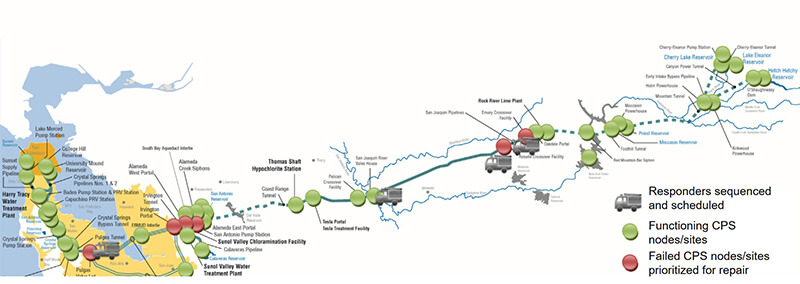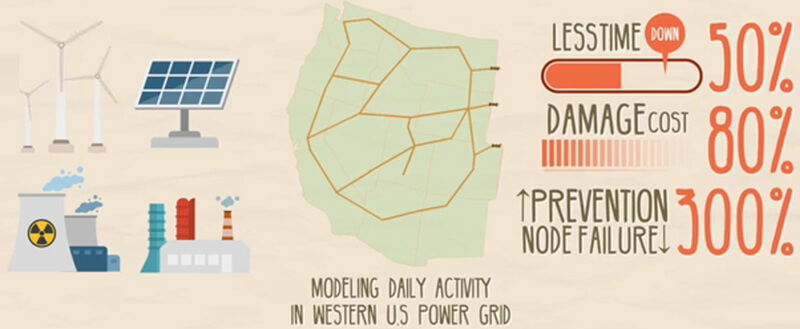 Purdue University innovators have come up with a method to help stop catastrophic failures involving systems with humans and equipment. This image shows the technology applied to a water distribution grid/cyber physical infrastructure. (Image provided)
Purdue University innovators have come up with a method to help stop catastrophic failures involving systems with humans and equipment. This image shows the technology applied to a water distribution grid/cyber physical infrastructure. (Image provided) WEST LAFAYETTE, Ind. – On Aug. 14, 2003, a series of faults caused by tree branches touching power lines in Ohio, which then were complicated by human errors, software issues, and equipment failures, led to one of the most widespread blackouts in North American history.
Now, Purdue University innovators have come up with a method to help stop such catastrophic failures involving systems with humans and equipment.
"Computers are providing more and more support, but humans are at the center of making decisions on how failures are repaired," said Shimon Y. Nof, a Purdue professor of industrial engineering and director of Purdue's PRISM Center. "Humans are prone to mistakes. When several mistakes coincide, such as they did in the 2003 blackout, cascading failures may occur and cause great damage."
Nof said the system invented at Purdue determines how resources are allocated to repair failures. The system generates failure repair sequences based on information about failures – such as time, location, severity, causes and required repair resources – and available resources, and recommends failure repair sequences that meet system objectives.
"System sustainability requires effective and efficient repair of failures. This invention improves sustainability by optimally repairing failures with limited resources," said Xin Chen, a former graduate student in Nof's lab who helped create the technology.
This technology provides real-time failure diagnostics and failure repair sequences that minimize the impact and prevent cascading failures. Nof said the technology has applications for electrical power grids, logistics systems, and other systems that need to repair multiple failures.
This technology is part of the team's work at Purdue's PRISM Center, focused on production, robotics and integration software for manufacturing and management. The researchers have created other systems, including a set of patented algorithms that predict, identify, diagnose and prevent abnormalities in large and complex systems.
 This image shows the Purdue technology applied to a power generation and distribution grid. (Image provided)
This image shows the Purdue technology applied to a power generation and distribution grid. (Image provided) The innovators are working with the Purdue Research Foundation Office of Technology Commercialization to license this patented technology. The office recently moved into the Convergence Center for Innovation and Collaboration in Discovery Park District, adjacent to the Purdue campus.






